Search
Search Results
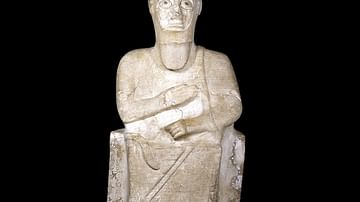
Definition
Amorite
The Amorites were a Semitic people who seem to have emerged from western Mesopotamia (modern-day Syria) at some point prior to the 3rd millennium BCE. In Sumerian they were known as the Martu or the Tidnum (in the Ur III Period), in Akkadian...
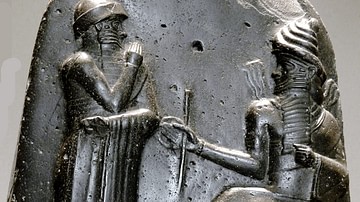
Definition
Hammurabi
Hammurabi (r. 1792-1750 BCE) was the sixth king of the Amorite First Dynasty of Babylon best known for his famous law code which served as the model for others, including the Mosaic Law of the Bible. He was the first ruler able to successfully...
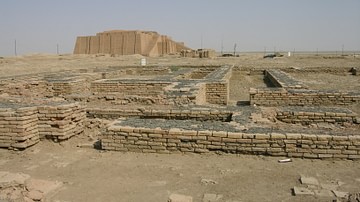
Definition
Ur
Ur was a city in the region of Sumer, southern Mesopotamia, and its ruins lie in what is modern-day Tell el-Muqayyar, Iraq. According to biblical tradition, the city is named after the man who founded the first settlement there, Ur, though...
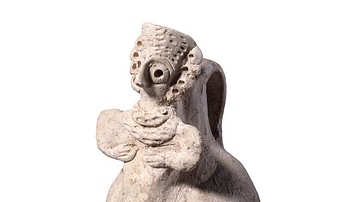
Image
Amorite pottery juglet
Amorite, about 2400-2000 BC From the Middle Euphrates region, Syria This juglet, with its applied figurine, is pierced at the base and may have been a strainer. Alternatively it could have been used a sprinkler, by clamping a thumb over...
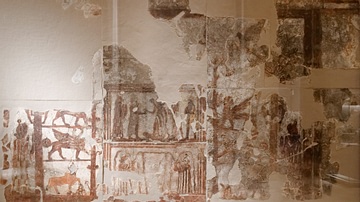
Image
The Investiture of Zimri-Lim
This fresco mural depicts Zimri-Lim, the last king of Mari. It was likely created c. 1775 BCE when Zimri-Lim regained the throne of Mari for the Amorite "Lim Dynasty" from Shamsi-Adad's son, Yasmakh-Adad. The mural depicts Zimri-Lim receiving...
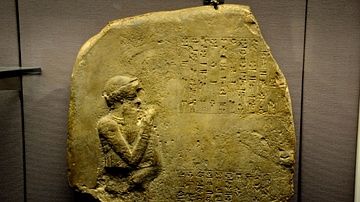
Image
King Hammurabi at Worship
Fragment of a stone stele dedicated by Itur-Ashdum, king Hammurabi at worship. The cuneiform inscription states that a high official called Itur-Ashdum dedicated a statue of a lamma to the goddess Ashratum in her temple on behalf of King...

Image
Statue of Idrimi
Late Bronze Age / Syrian, 16th century BC From Tell Atchana (ancient Alalakh), modern Turkey A statue of a king of Alalakh, covered with his biography in cuneiform This extraordinary statue represents Idrimi, a king of Alalakh. It...
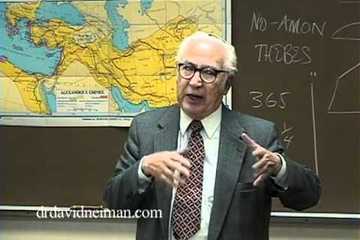
Video
The History of Egypt: The Hyksos (Part 3)
The Hyksos are mentioned in the Bible but are referred to as "Amorites". The Amorite Empire flourished across the entire middle east from 1800 B.C.E. until 1550 B.C.E. Dr. Neiman explains the difference between the Amorite empire of the...
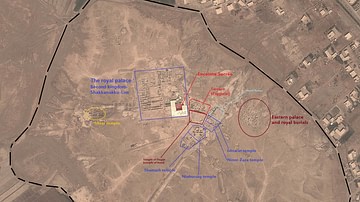
Definition
Mari
Mari was a city-state located near the west bank of the Euphrates River in Northern Mesopotamia (now eastern Syria) during the Early Bronze Age and the Middle Bronze Age. One of the earliest known planned cities, Mari is believed to have...
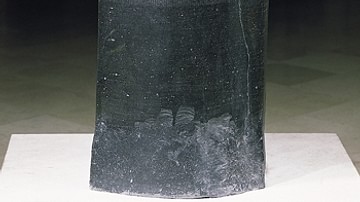
Definition
Code of Hammurabi
The Code of Hammurabi was a set of 282 laws inscribed in stone by the Babylonian king Hammurabi (r. 1795-1750 BCE) who conquered and then ruled ancient Mesopotamia. Although his law code was not the first, it was the most clearly defined...